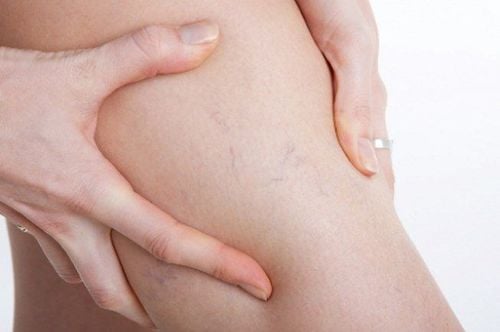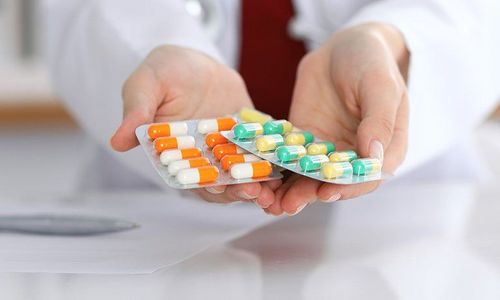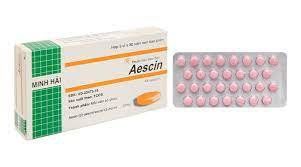This is an automatically translated article.
Varicose veins of the legs, also known as varicose veins of the lower extremities, this is a very common human disease in the 21st century. However, this disease has not received the attention of many people. The disease often unintentionally ignores or tries to tolerate the signs of the disease.
1. Varicose veins of the lower extremities are common in women
Superficial varicose veins of the lower extremities is a disease that often occurs in people over the age of 30, depending on each person's work, the risk of disease will be different, especially the disease is often seen in people who do jobs that require a lot of sitting. Standing for a long time, sedentary.
Currently, superficial varicose veins are common, but the vast majority of patients do not know they have the disease due to unclear symptoms, which are easily confused with other musculoskeletal conditions such as arthritis. , joint pain, neuromuscular pain. Patients only go to the doctor when the symptoms are getting worse, even some patients do not go to the stage of foot ulcer complications to go to the doctor.
What is superficial varicose veins? This is a condition in which the superficial veins in the legs are dilated, causing blood to flow in opposite directions. The disease occurs when the vein wall is weakened and the one-way valves inside the vein are damaged for some reason. .
Worldwide, the rate of men with superficial varicose veins is 1%, while the rate of women with superficial varicose veins is 4.5%. The prevalence of the disease will increase with age, more specifically in working age 35%, while at retirement age 50% have superficial varicose veins.
Research in Ho Chi Minh City (Vietnam) shows that the rate of women suffering from superficial varicose veins is 3 times higher than that of men. Women who work in offices are the most susceptible to the disease, due to the job requirements, often standing or sitting in one place for too long, combined with wearing high heels and being overweight will increase the risk. have increased superficial varicose veins. Especially, the risk of disease increases when pregnant women, in fact, the rate of pregnant women with leg edema is 50%, the rate of varicose veins in the lower extremities is 20-30%.
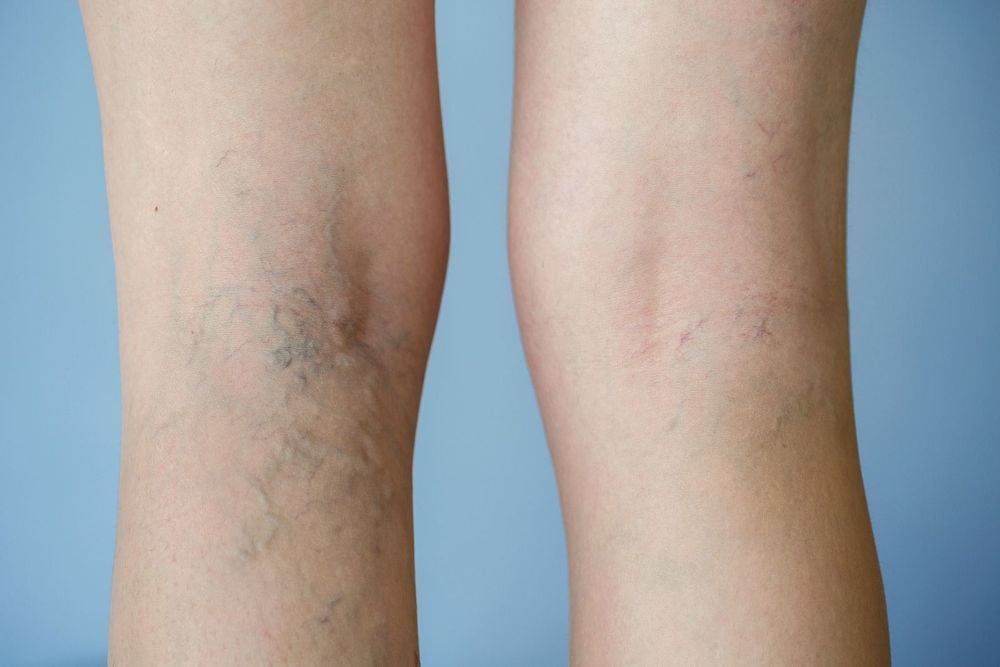
Giãn tĩnh mạch nông chi dưới là một bệnh lý rất phổ biến của con người ở thế kỷ 21
2. Causes of superficial varicose veins of the lower extremities
Varicose veins of the lower extremities are dilated veins that are elongated, winding and can be clearly seen just under the skin. This condition leads to backflow of blood in the veins. In addition to cosmetic problems due to varicose veins under the skin, superficial varicose veins of the lower extremities also cause pain, edema, ulcers, etc., very uncomfortable for patients.
In the veins, there are always one-way valves that are responsible for helping blood flow in the direction from bottom to top, from shallow to deep, preventing blood from flowing back, when the valves are weakened, blood flow There will be regurgitation and a tendency to pool in the lower leg, causing heaviness, numbness/edema, and superficial varicose veins of the lower extremities.
Habit or occupation that requires standing or sitting for a long time, less walking, pregnant women, obesity and old age are all contributing factors to the development of superficial varicose veins of the lower extremities. Varicose veins of the lower extremities have a family factor (80% of patients with chronic varicose veins have a parent with the disease), the frequency is more common in women than in men (due to the influence of female hormones and other factors). birth control pills).
Habits such as smoking, being sedentary, wearing clothes that are too tight, wearing high heels, eating less fiber, not getting enough nutrients, and drinking less water increase the risk of superficial varicose veins of the lower extremities. .
Excessive weight gain is also a cause affecting the legs, causing more blood to flow to the legs, increasing reflux due to increased pressure from the abdomen.
Surgery can cause complications of venous thromboembolism, phlebitis, especially obstetric and urological surgeries, cast procedures, patients immobilized for a long time in fractures...
People who eat a lot starch, or constipation is also very easy to varicose veins of the lower extremities.
3. Symptoms of superficial varicose veins
Patients should think of superficial varicose veins of the lower extremities and seek medical attention as soon as they notice the following signs:
Pain in 1 or 2 legs, feeling like cramps; Heaviness in both legs after lying/standing/sitting for a long time, this will disappear or lessen when the patient moves; Visible varicose veins in the lower extremities; Bleeding patches on the skin or sores; Feel the veins in the skin or feel the veins harden; Symptoms classified by stage of superficial varicose veins of the lower extremities:
In the early stages of superficial varicose veins of the lower extremities, patients usually only have signs of leg pain, leg heaviness, leg pain, and night cramps. cramps, numbness in the legs, stinging like ants crawling in the legs... In the advanced stage of superficial varicose veins of the lower extremities, the symptoms are the same as in the first stage but gradually worsen, swelling of the legs when standing for a long time. , sitting a lot continuously or edema in the afternoon after a working day. Edema usually occurs in the ankles, feet or more subtle edema, felt only when wearing shoes that are tighter than usual. In the lower leg area may appear eczema, skin color change, superficial veins. Under the skin is dilated, zigzag, the veins are tiny, especially in the ankle and foot area. In the final stage, the entire venous system will be dilated, circulatory stagnation and nutritional disorders of the skin will cause ulcers and infections. There may be a blood clot in the vein, which can travel to the heart and cause a pulmonary embolism (very serious complication) which can lead to death. Varicose veins of the lower extremities are graded according to CEAP as follows:
Grade 0: appearance of functional symptoms; Grade 1: Dilated capillaries, with reticular veins; Grade 2: Visibly dilated subcutaneous veins; Grade 3: Edema, no change in skin color; Grade 4: Dull skin, eczema, scleroderma; Grade 5: similar to grade 4 with healed ulcers; Grade 6: similar to grade 4 with an active, non-healing ulcer.
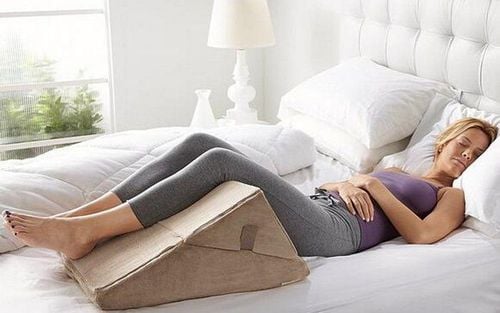
Gác chân cao khi ngủ để phòng tránh bệnh giãn tĩnh mạch nông chi dưới
4. How to prevent superficial varicose veins of the lower extremities?
Do not stand / sit for too long, the more pressure put on the legs, the more pressure on the veins, causing varicose veins; Control your weight, don't let your weight gain too quickly in a short time; When resting, you should put your feet higher than your chest, put your feet up when you sleep; Eat a lot of fiber, drink a lot of water to combat constipation; Increase physical activity, walk 15 minutes a day, yoga exercises are also very good for the prevention and treatment of varicose veins of the legs; Practice breathing deeply and correctly; Massage and soak feet with warm water; Avoid wearing high heels; Wearing special socks/socks can make your feet feel comfortable and relieve pressure; Avoid birth control pills that have a high estrogen content because estrogen can change blood circulation, contributing to the development of varicose veins. Avoid crossing your legs when sitting will put a lot of pressure on the thighs, pelvis, poor blood circulation, numbness, cellulite and varicose veins. Increasing citrus fruits, as they contain a lot of hesperidin, rutin, diosmin will help reduce varicose veins by promoting vein health. When detecting symptoms of superficial varicose veins of the lower extremities, need to go to the hospital immediately, currently, up to 70% of cases of superficial varicose veins of the lower extremities do not know they have the disease, only when there are complications. newly started treatment.
Follow Vinmec International General Hospital website to get more health, nutrition and beauty information to protect the health of yourself and your loved ones in your family.
Please dial HOTLINE for more information or register for an appointment HERE. Download MyVinmec app to make appointments faster and to manage your bookings easily.





